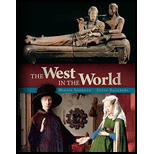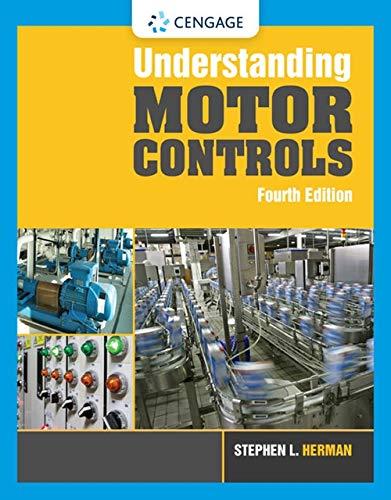
Foundations of Materials Science and Engineering
6th Edition
ISBN: 9781259696558
Author: SMITH
Publisher: MCG
expand_more
expand_more
format_list_bulleted
Concept explainers
Question
Chapter 16.13, Problem 51KCP
To determine
Write the basic structure of the Fe-Cr-Co magnetic alloy and write its
Expert Solution & Answer
Want to see the full answer?
Check out a sample textbook solution
Students have asked these similar questions
If you have a spring mass damper system, given by m*x_double_dot + c*x_dot + kx = 0 where m, c, k (all positive scalars) are the mass, damper coefficient, and spring coefficient, respectively. x ∈ R represents the displacement of the mass.
Let us then discuss the stability of the system by using Lyapunov stability theorem. Consider the system energy as a candidate Lyapunov function shown in the image.
Discuss the positive definiteness of V (x, x_dot).
Derive the Lyapunov rate of this system (i.e., V_dot ), and discuss the stability property of thesystem based on the information we gain from ̇V_dot .
In class, two approaches—Theorems 1 and 2 below—are discussed to prove asymptotic stability of asystem when ̇V = 0.
Show the asymptotic stability of the system given in Eq. (1) by applying Theorem 1.
Show the asymptotic stability of the system given in Eq. (1) by applying Theorem 2.
Homework#5
Chapter 16 Solutions
Foundations of Materials Science and Engineering
Ch. 16.13 - Prob. 1KCPCh. 16.13 - Prob. 2KCPCh. 16.13 - Prob. 3KCPCh. 16.13 - Prob. 4KCPCh. 16.13 - What is the relationship between B and H?Ch. 16.13 - Prob. 6KCPCh. 16.13 - Prob. 7KCPCh. 16.13 - Prob. 8KCPCh. 16.13 - Prob. 9KCPCh. 16.13 - Prob. 10KCP
Ch. 16.13 - Prob. 11KCPCh. 16.13 - Prob. 12KCPCh. 16.13 - Prob. 13KCPCh. 16.13 - Prob. 14KCPCh. 16.13 - Prob. 15KCPCh. 16.13 - Prob. 16KCPCh. 16.13 - Prob. 17KCPCh. 16.13 - Prob. 18KCPCh. 16.13 - Prob. 19KCPCh. 16.13 - Prob. 20KCPCh. 16.13 - Prob. 21KCPCh. 16.13 - Prob. 22KCPCh. 16.13 - Prob. 23KCPCh. 16.13 - Prob. 24KCPCh. 16.13 - Prob. 25KCPCh. 16.13 - Prob. 26KCPCh. 16.13 - Prob. 27KCPCh. 16.13 - Prob. 28KCPCh. 16.13 - Prob. 29KCPCh. 16.13 - Prob. 30KCPCh. 16.13 - Prob. 31KCPCh. 16.13 - Prob. 32KCPCh. 16.13 - Prob. 33KCPCh. 16.13 - Prob. 34KCPCh. 16.13 - Prob. 35KCPCh. 16.13 - What are eddy currents? How are they created in a...Ch. 16.13 - Prob. 37KCPCh. 16.13 - Prob. 38KCPCh. 16.13 - Prob. 39KCPCh. 16.13 - Prob. 40KCPCh. 16.13 - What compositions of NiFe alloys are especially...Ch. 16.13 - Prob. 42KCPCh. 16.13 - Prob. 43KCPCh. 16.13 - Prob. 44KCPCh. 16.13 - Prob. 45KCPCh. 16.13 - Prob. 46KCPCh. 16.13 - Prob. 47KCPCh. 16.13 - Prob. 48KCPCh. 16.13 - Prob. 49KCPCh. 16.13 - Prob. 50KCPCh. 16.13 - Prob. 51KCPCh. 16.13 - Prob. 52KCPCh. 16.13 - Prob. 53KCPCh. 16.13 - Prob. 54KCPCh. 16.13 - Prob. 55KCPCh. 16.13 - Prob. 56KCPCh. 16.13 - Prob. 57KCPCh. 16.13 - Prob. 58KCPCh. 16.13 - Prob. 59KCPCh. 16.13 - Prob. 60KCPCh. 16.13 - Prob. 61KCPCh. 16.13 - Prob. 62AAPCh. 16.13 - Prob. 63AAPCh. 16.13 - Prob. 64AAPCh. 16.13 - Prob. 65AAPCh. 16.13 - Prob. 66AAPCh. 16.13 - Gadolinium at very low temperatures has an average...Ch. 16.13 - Prob. 68AAPCh. 16.13 - Prob. 69AAPCh. 16.13 - Prob. 70AAPCh. 16.13 - Prob. 71AAPCh. 16.13 - Prob. 72AAPCh. 16.13 - Prob. 73AAPCh. 16.13 - Prob. 74AAPCh. 16.13 - Prob. 75AAPCh. 16.13 - Draw a hysteresis B-H loop for a ferromagnetic...Ch. 16.13 - Describe what happens to the magnetic induction...Ch. 16.13 - What happens to the magnetic domains of a...Ch. 16.13 - What are desirable magnetic properties for a soft...Ch. 16.13 - What are hysteresis energy losses? What factors...Ch. 16.13 - How does the AC frequency affect the hysteresis...Ch. 16.13 - How can eddy currents be reduced in metallic...Ch. 16.13 - Why does the addition of 3% to 4% silicon to iron...Ch. 16.13 - What disadvantages are there to the addition of...Ch. 16.13 - Why does a laminated structure increase the...Ch. 16.13 - Prob. 86AAPCh. 16.13 - Prob. 87AAPCh. 16.13 - Prob. 88AAPCh. 16.13 - Prob. 89AAPCh. 16.13 - Prob. 90AAPCh. 16.13 - Prob. 91AAPCh. 16.13 - Prob. 92AAPCh. 16.13 - Prob. 93AAPCh. 16.13 - Prob. 94AAPCh. 16.13 - Prob. 95AAPCh. 16.13 - Prob. 96AAPCh. 16.13 - Prob. 97AAPCh. 16.13 - Prob. 98AAPCh. 16.13 - Prob. 99AAPCh. 16.13 - Prob. 100AAPCh. 16.13 - Prob. 101AAPCh. 16.13 - Prob. 102AAPCh. 16.13 - Prob. 103SEPCh. 16.13 - Prob. 104SEPCh. 16.13 - Prob. 105SEPCh. 16.13 - Prob. 106SEP
Knowledge Booster
Learn more about
Need a deep-dive on the concept behind this application? Look no further. Learn more about this topic, mechanical-engineering and related others by exploring similar questions and additional content below.Similar questions
- If you have a spring mass damper system, given by m*x_double_dot + c*x_dot + kx = 0 where m, c, k (all positive scalars) are the mass, damper coefficient, and spring coefficient, respectively. x ∈ R represents the displacement of the mass. Using linear stability analysis, show that the system is asymptotically stable. Hint: stability of a linear system z_dot = Az is characterized by the eigenvalues of A.arrow_forwardWhat would the electropneumatic diagram of a circuit with the sequence a+b+c+(a-b-c-) look like?arrow_forward### What would the electropneumatic diagram of a circuit with the sequence a+b+c+(a-b-c-) look like, with a counter, in the fluidsim?arrow_forward
- You are asked to design a unit to condense ammonia. The required condensation rate is 0.09kg/s. Saturated ammonia at 30 o C is passed over a vertical plate (10 cm high and 25 cm wide).The properties of ammonia at the saturation temperature of 30°C are hfg = 1144 ́10^3 J/kg andrv = 9.055 kg/m 3 . Use the properties of liquid ammonia at the film temperature of 20°C (Ts =10 o C):Pr = 1.463 rho_l= 610.2 kf/m^3 liquid viscosity= 1.519*10^-4 kg/ ms kinematic viscosity= 2.489*10^-7 m^2/s Cpl= 4745 J/kg C kl=0.4927 W/m CCalculate the surface temperature required to achieve the desired condensation rate of 0.09 kg/s( should be 688 degrees C) a) Show that if you use a bigger vertical plate (2.5 m-wide and 0.8 m-height), the requiredsurface temperature would be now 20 o C. You may use all the properties given as an initialguess. No need to iterate to correct for Tf. b) What if you still want to use small plates because of the space constrains? One way to getaround this problem is to use small…arrow_forwardA differential element on the bracket is subjected to plane strain that has the following components:, Ɛx = 300 × 10-6, Ɛy = 150 × 10-6, Ɛxy = -750 x 10-6. Use the strain-transformation equations and determine the normal strain Ɛx in the X/ direction on an element oriented at an angle of 0 = 40°. Note, a positive angle, 0, is counter clockwise. x Enter your answer in micro strain to a precision of two decimal places. eg. if your answer is 300.15X106, please enter 300.15.arrow_forwardIf the 50 mm diameter shaft is made from brittle material having an ultimate strength of σult=595 MPa for both tension and compression, determine the factor of safety of the shaft against rupture. The applied force, F, is 140 kN. The applied torque T, is 5.0 kN⚫m. Enter your answer to a precision of two decimal places. T Farrow_forwardЗіс 1 mH 10 Ω m 16 cos 2.5 × 104 A Lic 592 10 Ω 1 μFarrow_forwardHomework#5arrow_forwardHomework#5arrow_forwardOxygen (molar mass 32 kg/kmol) expands reversibly in a cylinder behind a piston at a constant pressure of 3 bar. The volume initially is 0.01 m3 and finally is 0.03 m3; the initial temperature is 17°C. Calculate the work input and the heat supplied during the expansion. Assume oxygen to be an ideal gas and take cp = 0.917 kJ/kg K. For 1 bonus mark explain why (using your understanding of thermodynamics) that oxygen is used in this context rather than water vapour.arrow_forwardarrow_back_iosSEE MORE QUESTIONSarrow_forward_ios
Recommended textbooks for you
 Understanding Motor ControlsMechanical EngineeringISBN:9781337798686Author:Stephen L. HermanPublisher:Delmar Cengage Learning
Understanding Motor ControlsMechanical EngineeringISBN:9781337798686Author:Stephen L. HermanPublisher:Delmar Cengage Learning

Understanding Motor Controls
Mechanical Engineering
ISBN:9781337798686
Author:Stephen L. Herman
Publisher:Delmar Cengage Learning
Material Properties 101; Author: Real Engineering;https://www.youtube.com/watch?v=BHZALtqAjeM;License: Standard YouTube License, CC-BY